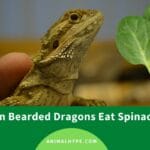Imagine a three-horned behemoth, the Triceratops, lumbering through the lush vegetation of the late Cretaceous Period. This iconic dinosaur, with its massive frill and powerful beak, was a dedicated herbivore. But what exactly did this prehistoric giant feast on? Let’s embark on a journey to uncover the secrets of the Triceratops diet, exploring the latest scientific discoveries and dispelling common misconceptions.
Decoding the Triceratops Menu
Roughly 68 to 66 million years ago, the world was a very different place. Giant ferns, cycads, and palms dominated the landscape, providing a bountiful buffet for the Triceratops. Their beak-like mouth, similar to a parrot’s, was perfectly suited for grasping and tearing tough vegetation. Imagine them snipping off fronds of ferns or plucking the leaves of low-lying plants. But the real magic happened further back in their jaws. Rows of specialized teeth, designed not for tearing flesh but for grinding, pulverized the tough, fibrous plant material. This dental adaptation suggests a diet far more complex than simply grazing on soft foliage.
[https://www.lolaapp.com/what-do-daddy-long-leg-spiders-eat]: Learn about the intriguing dietary habits of daddy long legs spiders.
[https://www.lolaapp.com/what-do-granddaddy-long-legs-eat]: Discover the peculiar feeding preferences of granddaddy long legs.
Beyond the Low-Lying Buffet: Expanding the Triceratops’s Palate
While low-lying plants like ferns and cycads probably formed a significant portion of their diet, evidence suggests Triceratops may have been more resourceful than previously thought. Their powerful horns, often associated with defense against predators like Tyrannosaurus Rex, may have also served another purpose: toppling trees. This intriguing theory proposes that Triceratops could have used their horns to knock down trees, gaining access to higher foliage, including leaves, fruits, and seeds—expanding their dietary options considerably. Furthermore, their strong build would have allowed them to push over smaller trees and access fresh growth.
The Wetland Gourmet: A Watery Twist to the Triceratops Diet
Adding another layer to our understanding of their diet, evidence suggests Triceratops inhabited wetland environments. This opens up the possibility of a diet rich in water-loving plants and perhaps even aquatic vegetation. Imagine them wading into shallow swamps, their powerful beaks plucking aquatic plants from the water’s surface, adding a unique dimension to their already diverse menu. This aspect of their diet is still being researched, but it hints at a more nuanced understanding of the Triceratops’s ecological niche.
Triceratops: The Cretaceous Lawn Mower? Busting the Myths
One common misconception is that Triceratops grazed on grass. However, grass hadn’t evolved during the Cretaceous period. The Triceratops’s “lawn” was made up of ferns, cycads, and other prehistoric plants. Another myth is that they solely ate soft foliage. As we’ve explored, their robust dental structure suggests they were well-equipped to process tougher, more fibrous vegetation, making them a key player in shaping the Cretaceous landscape. Their constant grazing would have influenced plant distribution, much like modern-day large herbivores impact their environment.
Five Fascinating Facts About the Triceratops’s Feeding Habits
- No Grass on the Menu: Triceratops lived millions of years before grass evolved, so their diet consisted of different plants altogether.
- Dental Powerhouse: Their rows of constantly replacing teeth acted like a prehistoric food processor, grinding down tough plant material.
- Tree-Toppling Titans?: Scientists speculate that Triceratops may have used their horns to knock down trees, accessing a wider variety of food.
- Wetland Diners: Their habitat suggests they may have consumed water-loving plants, adding a unique element to their diet.
- Pollination Partners?: As they browsed on flowering plants (angiosperms), they might have inadvertently aided in pollination, contributing to the spread of these newly evolved plants.
Ongoing Discoveries: The Ever-Evolving Story of the Triceratops Diet
Our understanding of the Triceratops diet is continually evolving. Scientists are using advanced techniques, such as analyzing fossilized dinosaur dung (coprolites) and studying the chemical composition of Triceratops teeth, to glean more insights into their feeding habits. New discoveries are constantly adding to the picture, providing a more detailed understanding of this magnificent herbivore’s role in the prehistoric world. Ongoing research is exploring areas such as biomechanical analysis of the Triceratops skull and isotopic analysis of teeth to further refine our understanding of their dietary preferences and ecological impact.
| Feature | Description |
|---|---|
| Beak | Sharp beak-like mouth for grasping and tearing vegetation. |
| Teeth | Rows of blunt, grinding teeth for processing tough, fibrous plants. |
| Horns | Potentially used for toppling trees to access higher foliage. |
| Habitat | Lived in wetland environments, suggesting access to water-loving and aquatic plants. |
| Diet | Herbivorous, consuming a diverse array of plants including ferns, cycads, and palms. |
While we may never know the exact details of every meal a Triceratops consumed, the ongoing research paints a vivid picture of a resourceful herbivore, perfectly adapted to its environment. This gentle giant played a crucial role in shaping the Cretaceous landscape, reminding us of the intricate connections between animals and their environment throughout Earth’s history.
- Mastering Medium in Physics: Wave Propagation Secrets - April 25, 2025
- Unlocking Tree Secrets: A Study of Trees for Sustainable Futures - April 25, 2025
- Discover Animal Patterns:Create Adorable Plushies Now - April 25, 2025
















